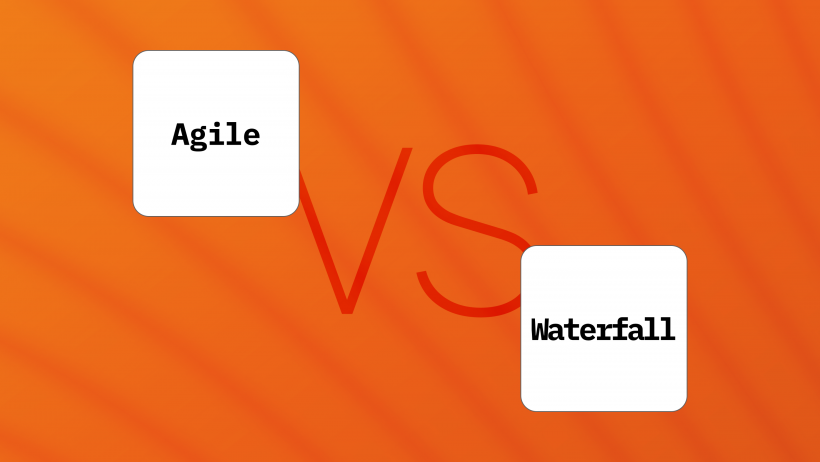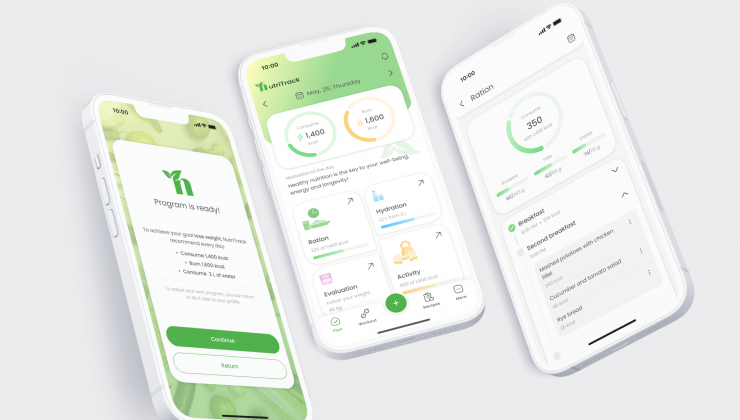If you’ve ever kicked off a software development project, you know one of the first big questions is: Which methodology should we use? Choosing between Agile vs Waterfall might sound like a technical decision reserved for developers, but in reality, it affects your entire project’s success — from budget and timeline to the final product’s quality.
Think of it like choosing a route for a road trip. Do you want a carefully mapped-out journey with no detours (Waterfall)? Or would you prefer a flexible path where you can adjust along the way (Agile)? Both approaches have their pros and cons, and the best choice depends on your project’s unique needs.
Let’s dive into software development methodologies and see how the Agile development process and the Waterfall development process compare.
Why Choosing the Right Methodology Matters
Your development methodology shapes every aspect of the project, not just the code itself.
- How your team collaborates – will your developers, designers, and stakeholders work closely together with frequent check-ins (Agile), or will they focus on their tasks independently until the final handoff (Waterfall)?
- How quickly you deliver features – Agile lets you release small but functional pieces of your product early, while Waterfall delivers everything at once at the end of the cycle.
- How well you adapt to changes – in Agile, adjusting to new user feedback or market demands is part of the process. In Waterfall, even small changes may require reworking entire stages, which can be costly and time-consuming.
- How risks are managed – Agile spreads risks across multiple iterations, catching issues early. Waterfall places more risk at the end when testing happens just before deployment.
- How clients stay engaged – Agile encourages constant collaboration and feedback, while Waterfall typically involves the client mainly during the planning stage.
Choosing the wrong approach can lead to wasted resources, missed deadlines, misaligned expectations, or even a product that fails to satisfy its users. That’s why comparing Agile vs traditional development isn’t just about buzzwords — it’s a strategic decision that defines how smoothly your project will run and how successful the final outcome will be.

What Is Waterfall Development?
The Waterfall development process is one of the oldest and most widely recognized methodologies. It follows a sequential development model where each phase must be completed before the next one begins.

Typical Waterfall Phases:
- Requirements gathering – collect all project needs upfront.
- Design – create detailed system architecture and UI/UX designs.
- Development – code the application based on the approved design.
- Testing – conduct quality assurance to identify and fix issues.
- Deployment – release the final product to users.
In Waterfall, once a phase is closed, it’s difficult (and costly) to go back. This makes it best suited for fixed scope projects where requirements are clear from the start.
When Waterfall works well:
- Government or compliance-heavy projects.
- Projects with strict budget and timeline constraints.
- Products with well-defined, stable requirements.
What Is Agile Development?
In contrast, the Agile development process is all about iterative delivery and adaptability. Instead of completing everything in a straight line, Agile teams work in sprints — short cycles (usually 1–4 weeks) where they plan, build, test, and deliver small increments of the product.

Key aspects of Agile:
- Agile sprints – break the project into manageable chunks.
- Continuous delivery – ship working features frequently.
- Customer collaboration – involve stakeholders throughout the process.
- Adaptability in software projects – adjust requirements as the project evolves.
This approach is ideal for projects with uncertain or changing requirements. It’s also perfect for MVP development in startups, where testing ideas quickly with real users is more valuable than building a fully polished product from day one.
When Agile shines:
- Products with evolving scope or user-driven design.
- Teams that need fast feedback.
- Startups aiming to release an MVP quickly.
Key Differences Between Agile and Waterfall
At their core, Waterfall vs Agile differ in how they handle planning, execution, and collaboration. One is flexible and iterative, the other is structured and linear. To make the contrast clearer, here’s a quick project lifecycle comparison of the two approaches:
| Factor | Agile | Waterfall |
|---|---|---|
| Flexibility | High — teams can pivot mid-project based on feedback or new needs. | Low — once the plan is set, changing direction is difficult. |
| Delivery Style | Iterative delivery in sprints — small increments are released regularly, giving users something tangible early on. | Sequential development — everything is built step by step, with delivery only at the end. |
| Client Involvement | Ongoing feedback — clients stay engaged throughout, reviewing each sprint and shaping the product as it grows. | Mostly in the initial phase — heavy input during planning, but limited visibility until the final handover. |
| Scope Changes | Easy to implement — Agile welcomes scope shifts, integrating them naturally into the next sprint. | Difficult and costly to adjust — late changes often mean rewriting or redoing completed work. |
This comparison highlights the fundamental trade-off: Agile prioritizes adaptability and collaboration, while Waterfall prioritizes predictability and structure. Neither is universally better, the right choice depends on whether your project needs flexibility or stability to succeed.
When to Use Waterfall
The Waterfall development process is best when your project demands stability, clarity, and strict oversight. It works especially well in environments where there’s little room for uncertainty.
- Requirements are crystal clear. For example, compliance software for banks, where every feature must follow established regulations. There’s no need for experimentation — everything is defined from the start.
- Budget and timeline are strict. If you can’t afford surprises, Waterfall’s step-by-step planning gives you predictability and control. Every phase has a budget, a deadline, and a clear deliverable.
- Documentation is crucial. In government, healthcare, or defense systems, detailed documentation is often a legal requirement. Waterfall naturally produces thorough records at each stage, making audits and reviews easier.
- Teams are distributed or external. When working with multiple vendors or outsourced specialists, Waterfall reduces confusion by locking in requirements and deliverables upfront.
In these cases, Waterfall’s structured nature reduces ambiguity and ensures everyone knows what to expect from day one. You can think of it like constructing a skyscraper: the blueprint must be finalized before a single brick is laid, and every step follows the plan without deviation.
When to Use Agile
The Agile development process is best when your project calls for flexibility, experimentation, and close collaboration with users. It thrives in fast-moving environments where feedback is essential.
- Building an MVP or startup product – quick iterations get you market-ready faster. You can test assumptions, pivot if needed, and avoid wasting months on features customers may not want.
- Requirements are evolving – perfect for products shaped by real user behavior. With Agile, feedback isn’t a late-stage add-on — it’s baked into every sprint.
- You need adaptability in software projects – flexibility is key to long-term success. If your industry is dynamic, Agile ensures you can respond to new trends or technologies without derailing the project.
- Cross-functional teams need to collaborate – Agile fosters communication between developers, designers, and stakeholders, keeping everyone aligned on priorities.
For example, an eCommerce startup might launch a basic store using Agile, gather feedback from early shoppers, and then add new features like wish lists, product recommendations, or loyalty programs based on real customer behavior. Instead of guessing, the product evolves naturally with its audience.
Hybrid Approach: Can You Combine Both?
Yes, many teams now use a hybrid Agile-Waterfall approach to get the best of both worlds.
Benefits of a hybrid model:
- Clear upfront requirements (Waterfall) for compliance and documentation.
- Flexible execution (Agile) for design, prototyping, and iterative improvements.
Real-world example:
A healthcare software provider might define strict regulatory features using Waterfall but build user-facing interfaces with Agile. This ensures compliance while keeping the product user-friendly and adaptable.
How to Choose the Right Methodology
There’s no universal answer — the right choice depends on your project’s context. Keep these factors in mind:
- Project complexity – well-defined projects work better with Waterfall; evolving or innovative ones thrive with Agile.
- Stakeholder involvement – limited input favors Waterfall, while ongoing collaboration suits Agile.
- Risk tolerance – low-risk, predictable projects lean toward Waterfall; higher-risk, experimental ones need Agile.
- Time to market – waterfall fits long-term, one-time launches; Agile is best for quick releases and MVPs.
In the end, it’s about finding the methodology that matches your goals, constraints, and team dynamics.
Conclusion
So, Agile vs Waterfall — which software development methodology fits your project? The answer depends on your goals, resources, and flexibility:
- Choose Waterfall for fixed scope projects with strict budgets and predictable outcomes.
- Choose Agile for evolving requirements, user-driven design, and the need for early feedback.
- Or blend both into a hybrid model if your project demands compliance and adaptability.
At the end of the day, there’s no one-size-fits-all. The key is aligning the methodology with your project’s vision and ensuring your team is comfortable with the chosen approach.
Ready to discuss which methodology works best for your project? Let’s talk and explore the right path together.


